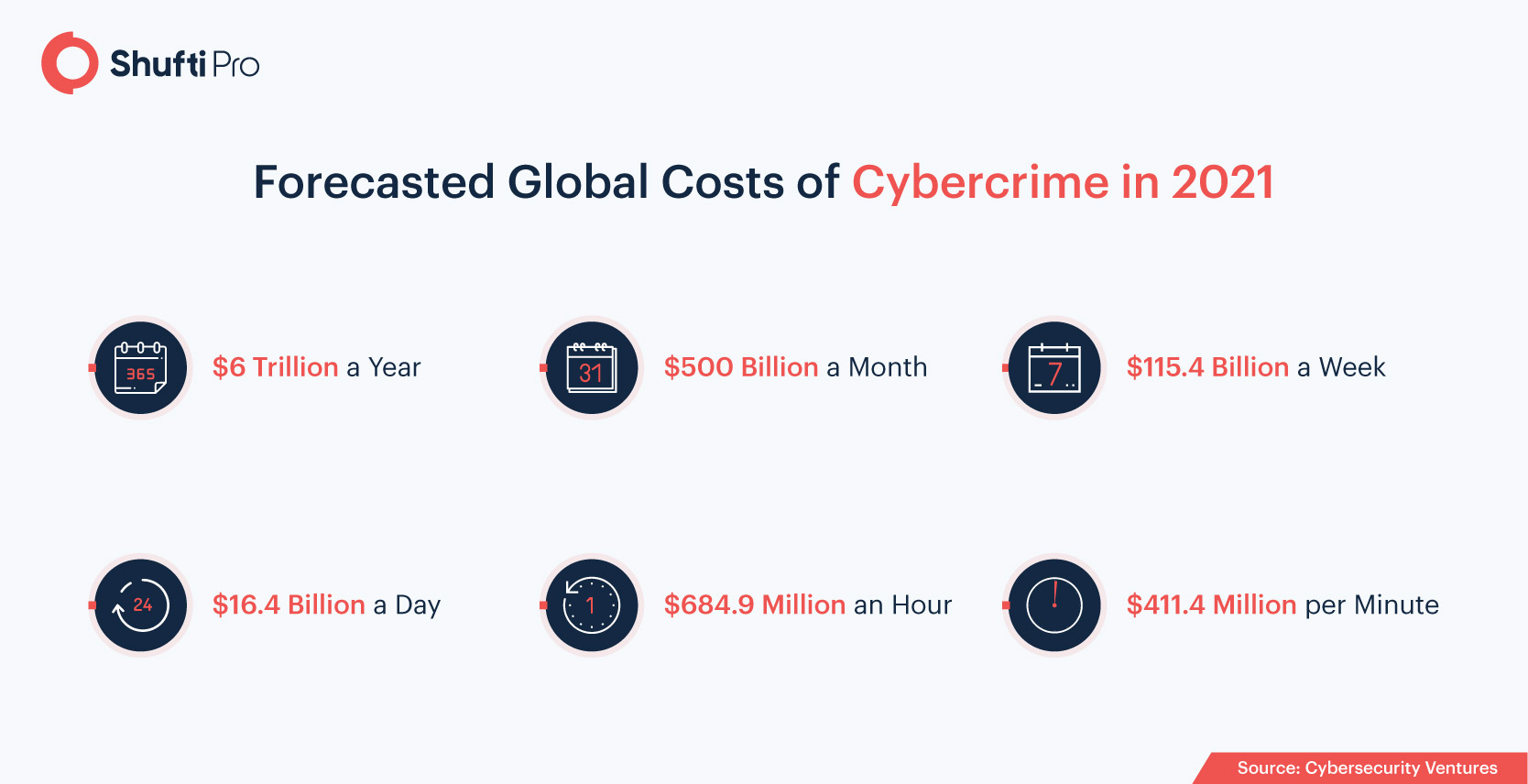Avoiding Billion-dollar Fraud & Non-Compliance Costs With Shufti

Businesses deplete millions of dollars each year on outdated technologies, employee training, and other efforts to ensure compliance with global regulations, laws, and company policies. Yet fraud and financial misconduct continue to prevail in the corporate world. Why? Because countless firms treat compliance as a check-the-box exercise. While they make employees go through long hours of training and make them attest their understanding in writing, they fail to realize the weaknesses in internal compliance mechanisms.
Businesses need to amend this situation by linking compliance mechanisms more closely with pre-defined objectives: preventing fraud, detecting it when it occurs, and minimizing compliance-related business costs.
A Deeper Dive Into High Costs and Surging Fraud
Millions of fake accounts at Wells Fargo. Ever-increasing unemployment insurance fraud in the United States. Widespread bribery at Petrobras in Brazil. While these financial scams made headlines in recent times, numerous organizations reported losing as much as USD 3 million in revenue to fraud.
In the UK, inefficient manual KYC verification costs banks £10 million each a year, as reported by Consult Hyperion. Despite this huge amount being spent on KYC checks, the results are barely fruitful. UK-based studies have shown that application abandonment rates in banks increased by 35% where manual KYC and AML processes were employed. This proves that customers are increasingly frustrated by legacy processes that are considerably time-consuming. Instead, they demand streamlined alternatives.
Where and Why Does Compliance Step In?
In the corporate sector, compliance refers to the process of ensuring that a business is abiding by all laws, regulations, global standards, and ethical practices that apply within that industry. For sectors such as banking and finance, this means implementing practices that follow global KYC (Know Your Customer) and AML (Anti-money Laundering) standards.
KYC regulations are designed to safeguard businesses against fraud such as identity theft, money laundering, financing of terrorist activities, and advanced cybercrimes. Here’s a look at some cybercrime stats that reinforce the need for KYC regulations.

To avoid these illicit activities, the KYC process begins during the initial stage of customer onboarding. The steps involved include: Verifying customer identity, understanding the true nature of customer transactions, and identifying the origin of their funds.
AML regulations serve the same purpose. However, they involve regulations regarding how businesses must have sufficient defense mechanisms in place to detect, prevent, and report any sign of money laundering and terrorist financing.
By complying with regulatory obligations, businesses can effectively prevent and detect any violation of the law, which ultimately allows them to avoid hefty penalties, fines, and lawsuits.
Finding Efficiency in Fraud Prevention and Compliance Spending
Enhanced manual identity verification processes can range from additional in-person questioning during a bank’s account opening stage, to recruiting hundreds of employees for monitoring customers, scrutinizing their documents, and supervising compliance. While these can help in verifying identities, criminals have advanced much further than this.
To combat bad actors and maintain regulatory compliance in one go, manual identity proofing and security mechanisms need to be replaced. Instead, automated identity verification providers such as Shufti offer the perfect solution. Here’s how.
Expanding the Use of AI and ML
Artificial intelligence (AI) has the ability to sort through huge amounts of data in a relatively short period of time. This makes the process more efficient at detecting inconsistencies and suspicious activities than manual methods. Additionally, machine learning (ML) can accurately identify patterns, making it useful for identifying exactly which customer is likely to commit fraud.
Automated AML and KYC verification solutions leverage AI and ML models. As automation needs no rest, it adds the added benefit of providing services 24/7. With minimum KYC friction, more customers can be verified per annum, allowing businesses to scale.
Shufti’s identity verification service uses AI and ML models to pick up on fake identities and their fraudulent activities. This can be done through a fully automated document verification process. During this, the IDV software verifies customer identities by authenticating their official ID documents and using Optical Character Recognition (OCR) technology for automated data extraction.
Additionally, because of AI-powered solutions, human error during data collection is substantially minimized and highly accurate results are gathered. Shufti provides an accuracy rate of 98.67%, filters out fake documents submitted by criminals, and accurately verifies 3000+ types of ID documents – all within a matter of seconds.
Bringing out Biometric Technology
Biometric technology is gaining institutional interest in sectors such as the government, healthcare, travel, immigration, and banking and finance. For example, major leading banks have rolled out biometric verification. JP Morgan and Chase, Wells Fargo, and the Bank of America have enabled their customers to access their mobile banking apps through fingerprint authentication. Voice recognition is also deployed within these banks for accurate customer identification.
The strength of biometric identity verification systems lies in their ability to eliminate fraud by identifying customers in real-time. Biometric facial recognition software offered by Shufti employs the added features of “liveness detection” and “3-D depth analysis”. With the help of these, businesses can accurately verify customers through a live analysis of their facial features and expressions.
In the same process, 3-D face masks, picture portraits, video replays, or any other spoof attempts made by fraudsters are detected. Thus, criminals are successfully weeded out, fraud rate within the organization is controlled, and KYC/AML non-compliance fines are effectively deflected.
Automation Drives Down Costs
The best method for fraud prevention and risk mitigation is to identify and manage fraudulent players before they become a risk. This requires firms to invest their time, effort, and resources into robust anti-fraud technologies.
Considering this, perhaps the key benefit of using AI for compliance is that it slims down the likelihood of fraud while substantially reducing the cost. Where manual KYC checks wipe out millions, automated identity verification streamlines the process and reduces the onboarding cost by 70%.
Additionally, Shufti’s AI-powered KYC and AML solutions cost much less than manual identity verification procedures. Don’t believe it? Avail the benefit of a 7-day free trial to prove yourself wrong!
Final Thoughts
The bottom line is, while automation does eliminate human evaluation and judgment, it can enable businesses to streamline day-to-day processes and customer identity verification. Both of these are necessary for firms to sustain themselves in a highly competitive market. To minimize regulatory risks, effortlessly meet AML/KYC compliance targets, and deter fraud in a single go, automated IDV solutions by Shufti can be utilized at a considerably low cost.











